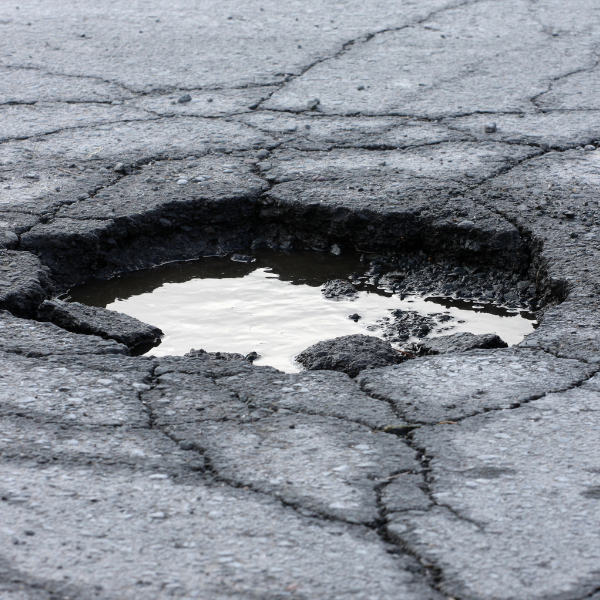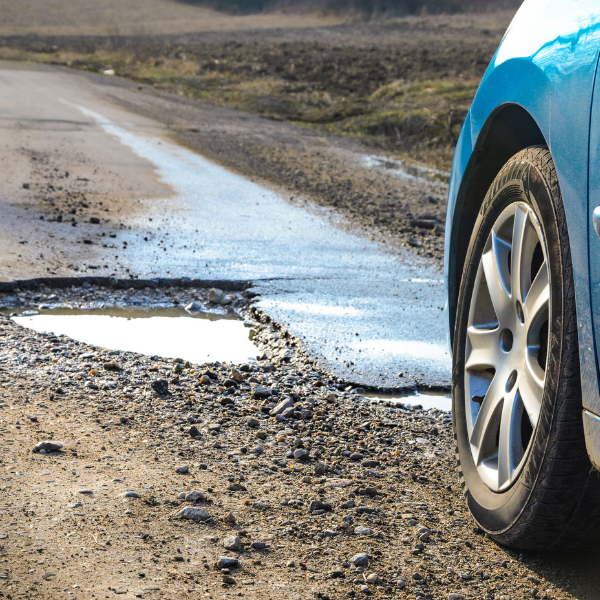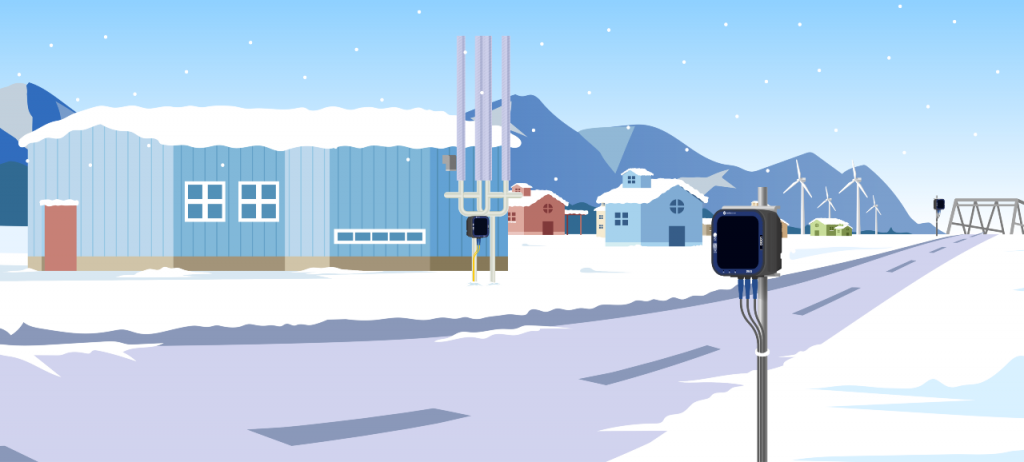Potholes are a universal nuisance, causing billions in road repair costs and vehicle damage every year. For those managing road infrastructure in cold climates, the problem is even more severe due to the relentless freeze-thaw cycle. Water infiltrates pavement cracks, freezes, expands, and weakens the structure—eventually leading to pothole formation.
While traditional methods like seasonal weight restrictions and manual inspections help mitigate damage, they are often reactive rather than proactive. Fortunately, advancements in remote temperature monitoring, like beadedstream’s Digital Temperature Cables (DTCs) and satellite-connected loggers, provide a smarter approach. By delivering real-time subsurface temperature data, these tools enable engineers and local governments to predict road conditions, optimize maintenance, and prevent potholes before they form.
In this article, we’ll explore why potholes form, why existing solutions fall short, and how temperature monitoring technology is changing the game.

Why Do Potholes Form? Understanding the Freeze-Thaw Effect
Potholes result from a gradual process driven by temperature fluctuations leading to road surface failure. Here’s how it happens:
Underground (Up and down degradation)
- Water Infiltration
- This water collects beneath the road’s surface, often trapped between layers of asphalt and the substrate below.
- Freezing and Expansion
- As temperatures drop, the trapped water freezes and expands, exerting pressure on the pavement.
- This expansion pushes apart cracks and weakens the road’s structural integrity.
- Thawing and Collapse
- Localized spots of thaw result in trapped water that cannot drain. This water acts as a water-bed under the road which causes excessive shear forces when loads roll over them.
- When temperatures rise, the ice melts, leaving behind gaps and voids where the road substructure used to be.
- Traffic loads exacerbate the problem, causing pieces of asphalt to break away and form potholes.
Surface Level (Side to side destruction of surface)
Additionally, temperature cycles cause further degradation of the surface:
- Groundwater, rainwater, and melted snow seep into cracks and voids in the surface of the pavement.
- Freezing and Expansion
- As temperatures drop, the trapped water freezes and expands, exerting pressure on the pavement.
- This expansion pushes apart the surface and weakens the road’s structural integrity.
The Role of Climate Change
Traditionally, road engineers prepared for spring thaw, when the ground shifts due to melting ice. However, research shows that increasingly erratic freeze-thaw cycles during winter, are leading to year-round pavement deterioration. Without real-time temperature data, it’s difficult to anticipate and mitigate these issues before they become costly repairs.

Current Solutions: A Reactive Approach
Most municipalities and highway departments use a combination of the following strategies to manage pothole formation:
- Seasonal Weight Restrictions: Many cities impose truck weight limits in spring to reduce stress on thawing roads. However, with freeze-thaw events occurring unpredictably throughout the winter, fixed seasonal restrictions are becoming less effective.
- Manual Inspections: Crews physically assess road conditions, but this method is time-consuming, expensive, and lacks precision.
- Pavement Condition Sensors: Some agencies use road surface temperature sensors, but these don’t provide subsurface temperature data, which is critical to understanding freeze-thaw dynamics. Subsurface sensors can withstand more road maintenance.
As a result, many thermistor installations go dark over time due to lack of maintenance, and remote locations often lack infrastructure for continuous monitoring.
A Smarter Approach: How beadedstream’s Temperature Monitoring Technology Helps
To address these challenges, beadedstream provides a comprehensive temperature monitoring system that delivers real-time subsurface data from anywhere in the world. Here’s how it works:
1. Real-Time Temperature Monitoring
- Digital Temperature Cables (DTCs) are installed beneath roads to track temperature changes at multiple depths.
- Satellite-connected data loggers transmit data directly to the cloud, enabling 24/7 access.
- Engineers can remotely monitor conditions through the beadedcloud web dashboard or via API integration into existing systems.
2. High-Resolution Sensing for Accurate Insights
- Temperature sensors spaced every inch allow for detailed thermal profiling.
- Up to 125 sensors per cable provide a granular view of roadbed temperature fluctuations.
- Additional air temperature sensors help correlate pavement data with weather conditions.
3. Durable, Long-Term Monitoring
- beadedstream’s systems are waterproof, built for extreme conditions, and solar-powered, ensuring multi-season reliability.
- Unlike many traditional sensors, DTCs don’t require frequent maintenance, making them ideal for long-term deployments in remote locations.
4. Advanced Temperature Forecasting
- Using NOAA weather data, beadedstream’s forecasting tool predicts underground temperatures up to 30 days in advance.
- This proactive approach helps transportation agencies implement weight restrictions and maintenance strategies based on real-time conditions, rather than outdated seasonal models.
The Impact: Smarter Road Management and Pothole Prevention
By leveraging real-time temperature data, transportation agencies and road engineers can:
✅ Optimize weight restriction timing: Instead of blanket seasonal bans, weight limits can be imposed based on actual ground conditions, reducing economic impact on freight transport.
✅ Prioritize maintenance efforts: Early warnings allow crews to repair minor cracks before they become potholes, saving on emergency repairs.
✅ Enhance road safety: Preventing potholes means fewer accidents, vehicle damages, and insurance claims.
✅ Reduce long-term infrastructure costs: Smart monitoring helps governments allocate resources efficiently and extend road lifespan.

Conclusion
Potholes may seem like an inevitable consequence of winter, but they don’t have to be. The combination of real-time temperature monitoring, advanced forecasting, and remote data accessibility is transforming how we manage roads in cold climates. beadedstream’s technology offers a proactive, data-driven solution that helps engineers and municipalities combat the freeze-thaw menace effectively.
🔹 Are you ready to prevent potholes before they form? Contact beadedstream today to learn how our temperature monitoring solutions can optimize your road maintenance strategy.








